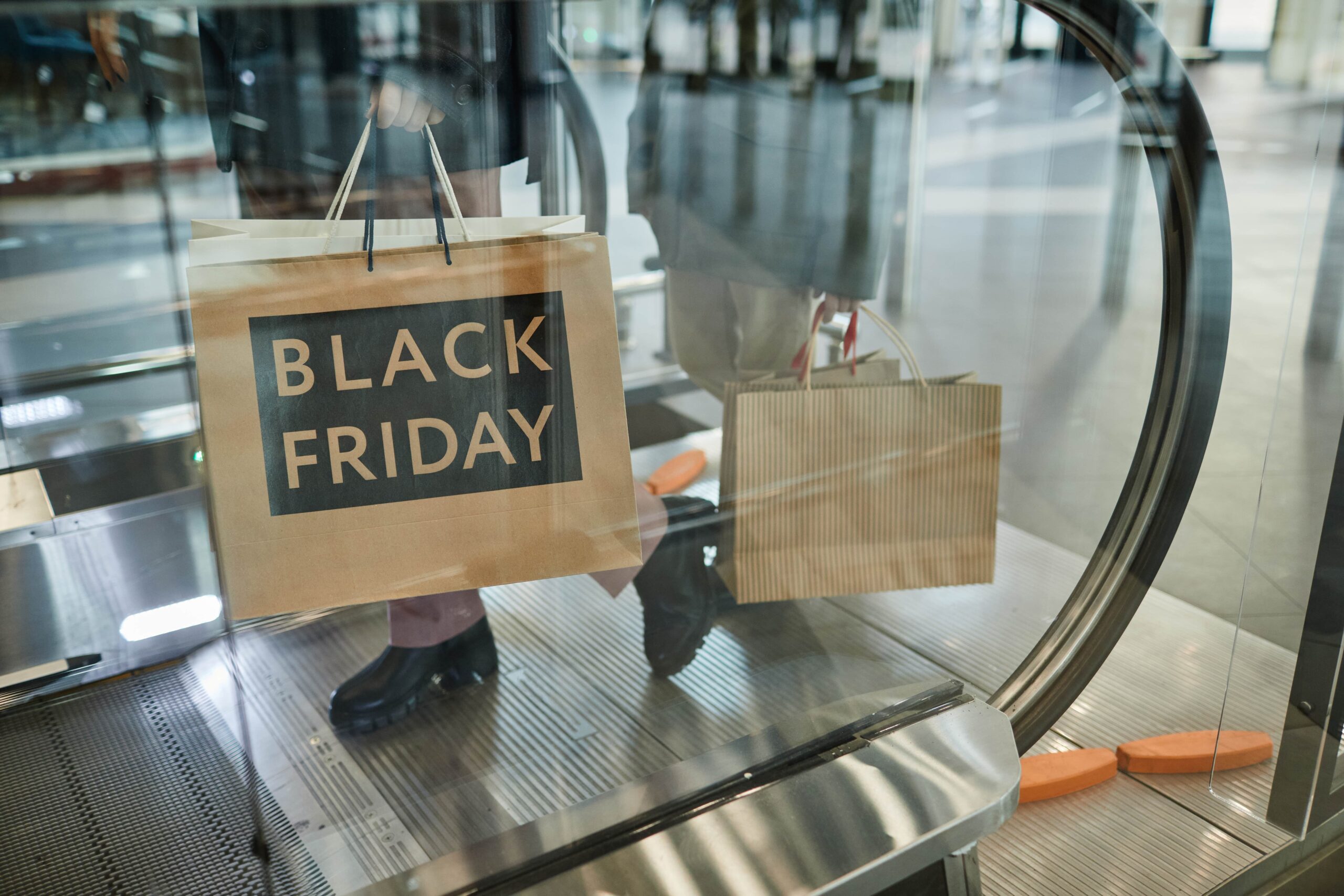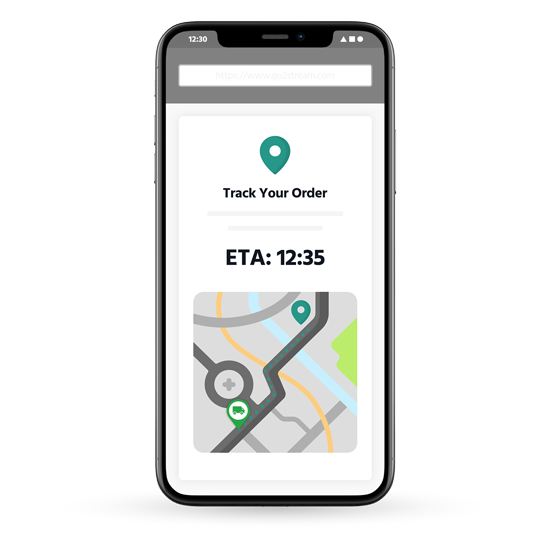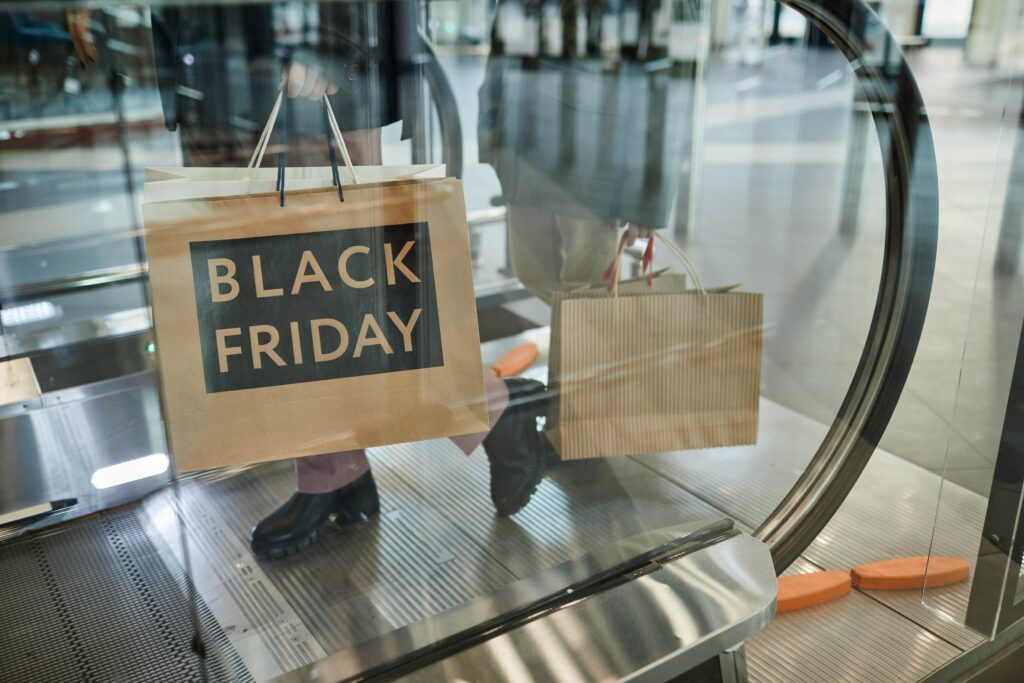“By failing to prepare, you are preparing to fail.” – Benjamin Franklin
Peak season 2022 is coming.
Black Friday on the 25th November kicks off the beginning of the peak shopping season, as consumers flock online and to traditional brick-and-mortar stores to buy gifts for their family and friends.
It can be a lucrative period for retailers who are well prepared for the storm ahead, but those that fail to prepare wisely can be left snowed under.
Businesses can easily be overwhelmed if they don’t have the correct structures in place to cope with the influx of demand that may be heading their way.
Research by Brightpearl found that last year during peak season (2021) over 50% of the retailers surveyed in their study felt overwhelmed by consumer demand, and for many it resulted in a nosedive in customer satisfaction due to issues such as late or cancelled orders.
The most important question for retailers is therefore: why were they being overwhelmed?
There are ten factors which Brightpearl have attributed to this; each will be dissected and analysed in this guide:
- Supply chain issues
- Increased costs
- Stockouts, overselling and product shortages
- Delayed orders
- Inventory shortages
- Attracting new customers
- Labour shortages
- Peak online demand
- Returns management
- Complexity of multiple shopping and delivery channels
By having a better understanding of the complexities associated with these challenges, and the solutions to these problems, retailers can better prepare themselves for the coming peak season and make hay while the proverbial sun is shining.
What’s in store for the coming peak season?
For retailers that are anxiously awaiting the pressures that this period will inevitably bring, this year is predicted to be more muted in comparison to previous years, as retail spending is set to fall 3% compared to 2021.
This equates (approximately) to £82.2bn spent during the six weeks leading up to Christmas – a decline of £2.51bn in comparison to net spending figures last year.
The general consensus is that UK spending is going to take a multi-billion pound hit.
Retailers and consumers alike are starting to feel the pinch of the cost of living crisis. Everrising inflation and a recession will force many to tighten their peak season budgets and prioritise spending outside of retail.
This merits with research that found 58% of the respondents were expecting to decrease their spending this coming peak season.
Consumers ultimately have less money to spend, and retailers should focus on attracting new customers and expanding their offering through multiple shopping and delivery channels in a bid to bolster revenue, as the volume of sales over this coming peak season period is expected to drop for most businesses.
The main pressures retailers will experience this coming peak season will therefore differ from previous years, and the earnestness should be on trying to increase demand and combat the pressures of inflation that have tightened profitability.
Exploring a multichannel approach to bolster revenue
“Consumers are increasingly experimenting with a range of new and non-traditional channels for both discovery and purchase.” – Brightpearl
Gone are the days when retailers could manage their online sales across a single ecommerce website.
Now they’re selling and managing inventory across multiple marketplaces – from traditional marketplaces such as: eBay, Amazon and Etsy, to more modern marketplaces like Instagram, TikTok and Facebook.
It’s a no-brainer for retailers – utilising multiple sales channels creates more revenue streams and sales opportunities, as the more accessible their products are for purchase the easier it is for them to be discovered and bought.
Research has found that consumers often have preferences as to which sales channels they prioritise buying from, to such an extent that a third (33%) of shoppers in the UK claim they would buy from a competitor that sold on their preferred buying channel over an existing brand they’ve been loyal to before.
And the last thing any business wants is to lose custom to their competitors.
A significant number of businesses in the UK (75%) and US (58%) chose not to adopt any new sales channels ahead of last year’s holiday season, which may have amounted to revenue and growth.
The counter argument that businesses often have when pursuing a multichannel strategy is that it can be costly and time consuming to set up and manage multiple new sales channels and platforms.
This is a misconception.
Retailers have to be on the front foot if they want to find new ways to monetise this upcoming peak season, and find new ways to drive revenue in order to fight decreased demand and inflation.
Gain greater control over your inventory to avoid stockouts, overselling and product shortages
There are numerous enterprise resource planning (ERP) solutions on the market that can relieve some of the complexities and challenges that multichannel selling can create during periods of exponential demand, such as stockouts (out of stock), overselling and product shortages.
Operating systems such as Unleashed, Brightpearl and Mintsoft have specialised inventory management automations that seamlessly connect with your various sales channels, allowing you to govern your inventory across numerous marketplaces for greater visibility and control.
They function to enable businesses to keep a closer eye on their daily stock levels and track the performance of in-demand products, particularly when holding heavily discounted promotions such as clearance sales.
Which are prevalent during peak season.
They connect your warehouse, inventory, and shipping systems together to communicate data in real-time, limiting the possibility of stockouts or product shortages that impact sales and hurt customer engagement (typically through delayed deliveries or orders being cancelled).
In a survey conducted by Netstock last year, 82% of respondents who shopped exclusively online experienced stockouts as opposed to the 67% of consumers who primarily shopped in-person in traditional stores.
The reality is that stockouts are costly, and have unwanted consequences, particularly as 43% of consumers indicated they were more likely to forego buying a certain product altogether after experiencing two or more successive stockouts.
Aside from using inventory management software as a solution to these complexities, there are also a range of demand planning and forecasting tools on the market that analyse historical demand data and create accurate forecasts.
Market shifts, supply chain issues and unpredictable consumer behaviour prompted by the cost of living crisis means that pre-empting inventory levels and demand this peak season will be a major challenge for retailers.

Precise demand planning will help to better understand what is on the horizon so that they gauge how much inventory they should stock, and the ideal times to run promotions or launch new products.
It also has the benefit of reducing excess stock so that funds are not tied up in inventory that a business may be struggling to sell, so efforts can shift to marketing products that do.
If your business buys inventory from a supplier, be sure to keep in consistent dialogue with them to gain a clear understanding as to how much inventory you may need at peak times, in addition to exploring demand planning and demand forecasting tools.
Harness the magic of automation to limit dependence on manual labour
“With a limited labour pool, UK businesses must find innovative ways to avoid supply chain disruption as peak season is underway… automation is the answer.” – Neil Berry, SVP and GM, EMEA at Berkshire Grey
eCommerce fulfilment is fast becoming a key competitive tool by which retailers are differentiating themselves, and its success is being precipitated by automation.
Aside from the aforementioned solutions that manage inventory and demand planning, there are ERP solutions on the market that streamline shipping and fulfilment procedures to allow retailers to reduce their reliance on manual labour (of which there is a major shortage currently in the UK).
It is one of the most effective ways for businesses to scale this peak season whilst saving time and money.
There are a wide range of processing and fulfilment solutions on the market, but they can be segmented into two distinct categories: automation software that integrates with your eCommerce site and high-end (physical) robotics.
It’s worth covering both bases to appease various budgets.
On that note, what functionalities do autonomous processing and fulfilment softwares currently offer that optimise your supply chain?
- Segment customers based on certain attributes such as ordered product, total lifetime spending, geographics, demographics and deploy targeted workflows to them
- Automatically hold and flag high-risk (fraudulent) orders and automatically alert the customer service team for review
- Schedule and run flash sales, product drops, and marketing campaigns – turning manual tasks into automated workflows
And what functionalities do autonomous robots currently offer that streamline sorting and fulfilment?
- Robotic ‘pick cell’ solutions automate the picking and placement of individual items into eCommerce delivery packages, creating goods-to-robot stations as opposed to goods-to-worker stations that require manual labour
- Robotic sorting solutions pre-sort order packages with minimal manual intervention, leverage zone skipping (sort parcels by geographical zones), and auto-identify barcodes on packages
- Omnidirectional transportation robots can move heavy goods securely from one destination to another
Don’t make your customers pay!
Last year a third (33%) of UK brands cited ‘supply chain struggles’ as their greatest concern during peak season. Issues along the supply chain create unwanted delays and often lead to rising costs, which retailers have had to constantly contend with since the Covid-19 pandemic.
Inflation pressures inevitably lead retailers to panic and turn to quick fixes such as extending delivery timescales, rising shipping prices and foregoing promotions altogether in order to reduce demand.
These are negative measures that feel anti-consumer and feel as though the customer is being punished (don’t make them pay!).
Retailers have to be resilient and think positively this peak season.
A Harvard Business Review study found that shoppers spend 9.4% more on average when they’re incentivised to hit a threshold for free shipping.
If a business wants to retain their free shipping promotion they could consider raising the threshold customers must spend to achieve this luxury – increasing the average order value to combat inflation, whilst also deterring abandoned carts at checkout by eliminating hidden shipping fees.

A clear and visible free shipping policy also offers customers transparency, which is highly valued and builds brand loyalty.
This level of transparency also extends to how retailers communicate with their customers and manage their expectations this peak season.
Deliver the goods this peak season
“It’s about finding a balance between the options that are affordable, are aligned with customers’ needs, and are realistic when it comes to your ecommerce logistics.” – Shopify
The automation process shouldn’t end at fulfilment.
For businesses that utilise their own last-mile delivery service and deliver goods in their own vehicles, Stream allows you to offer an exceptional customer experience through a wealth of functionalities.
With retailers facing tightening margins and other economic pressures this peak season, cutting costs and avoiding any additional costs becomes of greater importance.
One such cost that can hurt businesses is failed deliveries.
Research has found that there is a 6% delivery failure rate in the UK which costs on average £11.60 per failed delivery.
This costs retailers on average £200,000 annually.
The impact of failed deliveries doesn’t just end at revenue either – customer satisfaction, customer loyalty and brand reputation are all affected, and it’s enough to put off first time buyers for good.
Not to mention the additional time it takes to rearrange, redeliver and handle customer support issues due to the initial failed delivery.
When demand is high, this can create unwanted headaches.
It goes without saying that the easiest solution is to have the correct solutions in place to limit the likelihood of failed deliveries, namely through improving the efficiency and reliability of a retailers last-mile delivery process.

Stream offers one such solution through proactive email and SMS communication with customers, in addition to electronic Proof of Delivery (ePOD), which drive customer engagement, and reduce the likelihood of errors which commonly lead to failed fulfilment.
Want to find out more about how Stream can help streamline your logistics operation this peak season?
Frequently Asked Questions
Inventory management refers to the organisation of stock and the process of manufacturing (or purchasing), storing, monitoring and selling it. A business is responsible for tracking inventory levels and how this stock flows through the supply chain as it makes its way to the end user.
Demand planning and demand forecasting differ slightly in that demand forecasting is predicting future estimates for how much inventory will sell; and demand planning refers to the subsequent actions a business will take on the basis of this prediction/estimate.
A multichannel approach in retail means that a business sells their products across numerous marketplaces at the same time. This differs from an omnichannel approach where a business will sell on one channel or marketplace, such as their own website or just on Amazon.






